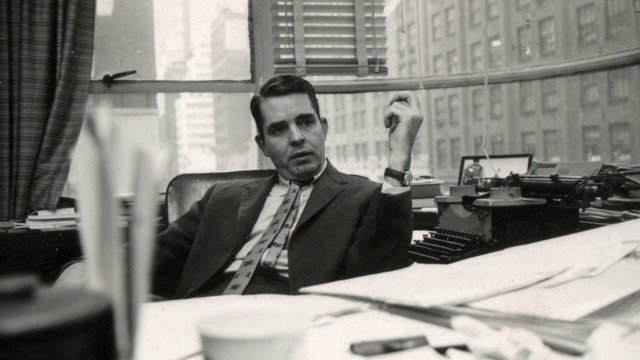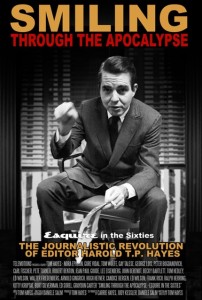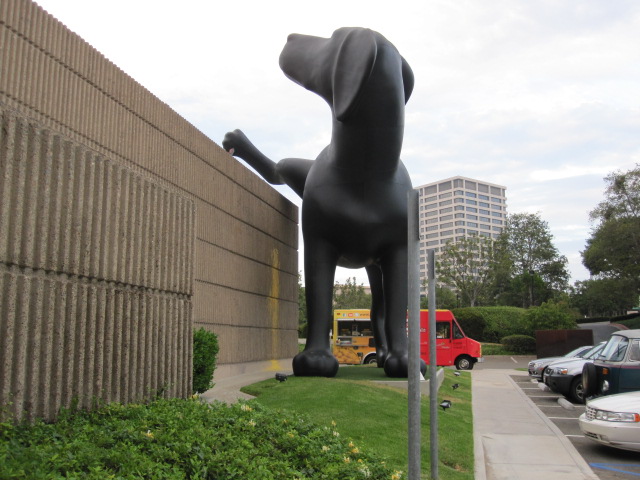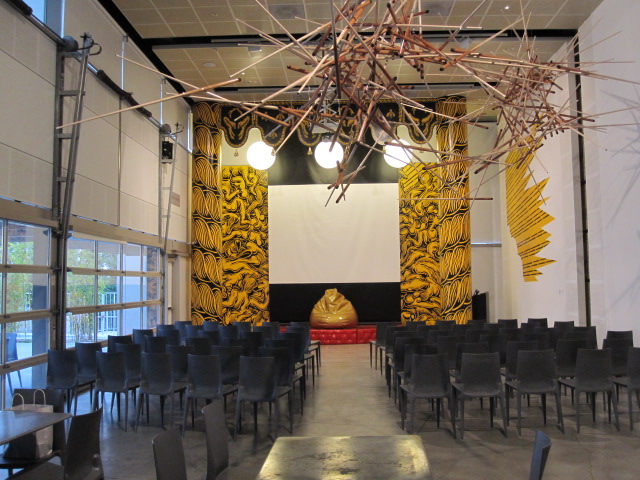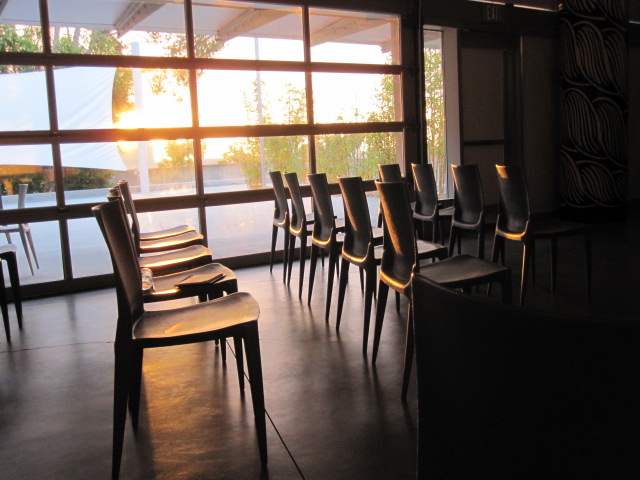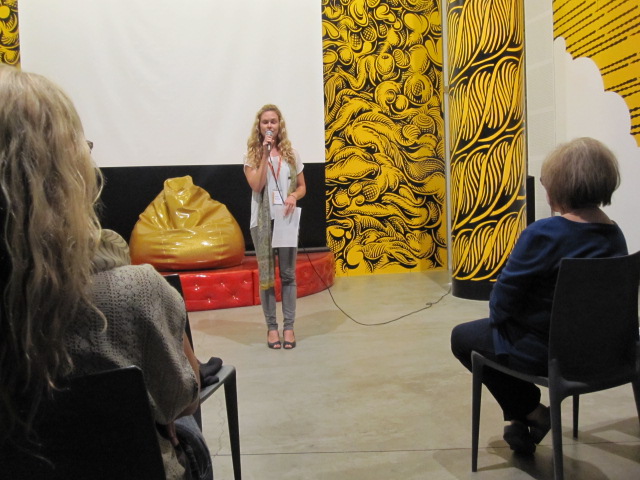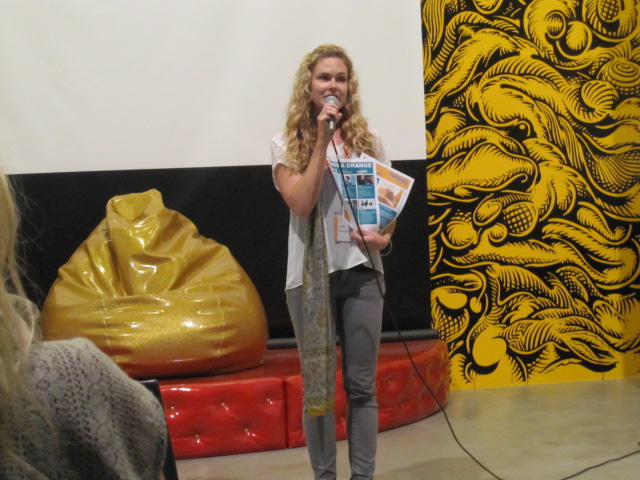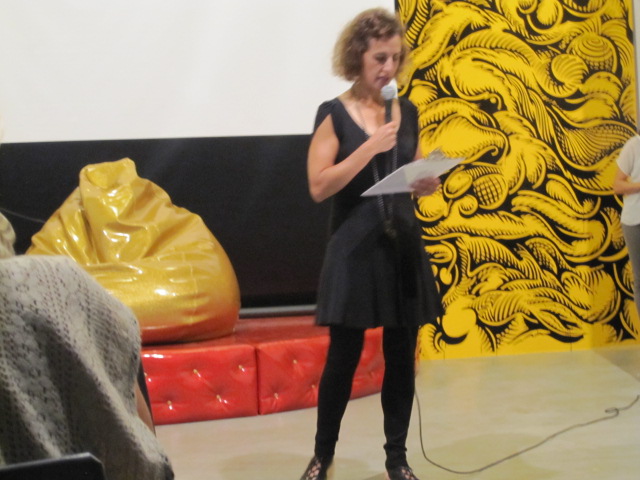Smiling Through the Apocalypse
Esquire in the 60’s – A Confused Documentary
by Tyler Dean | Photographs by Tyler Dean (excluding images of Harold T.P. Hayes)
OCMA | 850 San Clemente Drive | Newport Beach, CA
“Excuse me?”
The older gentleman walking by my car doesn’t hear me at first.
“Sir?”
He turns his head, wondering why this young fellow is jibber jabbering at him during what could very well be his afternoon stroll. I take advantage of the moment before he can mistake me for some sort of ne’er do well.
“Yeah, hi. Can you tell me where I can find the museum?” I chime, hoping the word “museum” will keep his interest long enough to answer me.
A smile creases his leathery skin. “Turn the car around and go straight. You’ll run right into it,” he says. Before I can say my thanks, he’s already continued on his walk.
Sighing, I turn the car around, carefully navigating one of the many narrow side streets that riddle Fashion Island.
Having just gone to LACMA two weeks prior to see the Kubrick exhibition, I expected OCMA to elicit from me a similar response of awe and intimidation. Not to mention the taking of my money, the chorus of food trucks, and parking meters that were sure to be waiting for me.
You can imagine my surprise, then, when I find the parking lot to not only be situated right at the foot of the museum’s doors, but totally and completely FREE. There are few things outside of a perfect root beer float or butterscotch candy (the hard kind; not the chews), that fill me with similar unparalleled joy – and pay-free parking is it, baby.
I park the car, grab my things – comprised of my camera, notebook, and an at-15% iPhone (which we all know is the zone where any smart phone becomes next to useless and we must weigh the pros and cons of being able to call 911 in the case of an emergency and accept we might not be able to text) – and I head toward OCMA’s front doors.
From the outside, the building’s construction is not very impressive at first glance. It’s not the sort of look that could ever really stand out in any one person’s mind. The best way to describe it would be the sort of building you might find on a primary school property – blocky, unimaginative, a shade of color between gray and brown. Once I got inside, it was a completely different story.
Pushing the doors open, my gaze is immediately met with three large fixtures to my left: white fabric sheets printed with black-stained designs of imagery I am unfamiliar with, stretched bare by wooden frames. It should be noted that my interest in any art medium other than film or stage play is relatively nonexistent (both intellectually, and on an entertainment scale), so my apologies in advance for not raving about who the artist might have been, or “what they were trying to say.”
When I finally tear my gaze from these, I am able to take in the rest of the tall, long room. The white-washed walls and flooring hold a pearlescent Kubrickian value that seems to only be magnified further by a structure directly behind the main desk – a cylindrical beast of a thing, made up of overlaying sheets not unlike what you might see at an airport baggage claim. It was to the desk that I began making my way toward, when the sound of someone screaming to my right grabs my attention. I turn. There is only the wall, but also a television set that seems to be playing host to a film of an Asian male, painting. I watch the video for a moment, to see if indeed it had been the source of the yelling, and when I conclude that there is nothing to suggest that it was, I turn back toward the desk.
“Ahhhhhhhhhh!!” screams the voice again.
I look around me to see if the people at the desk, or perhaps the large group of museum visitors congregated a short ways away, have heard anything. No one acknowledges the noise, or me for that matter. I have to investigate. My first thought, as you yourself might be wondering, is that I am experiencing one of those dynamic art pieces where the artist sets up an unusual situation to see how passersby react. I may not be an art connoisseur, but I’ll be damned before I fail to solve this little ditty of a mystery.
Two minutes pass, as I walk back and forth across the space directly in front of the television and the wall behind it, thinking my movements are triggering some sort of invisible mechanism. Finally, I realize that it actually is the video on the television. Failing to document the artist’s name, I read the placard next to the film: the video shows the physical manifestation of an artist’s angst as he goes through the artistic process. The purpose was to create a literal “painting of emotion”, by having the Asian gentleman scream as he brushes a white canvas with different shades of yellow. Mystery solved.
Having finally escaped the only tangent of my visit (and not without a few stares as to what in God’s name I could be doing), I approach the front desk where a lovely young woman politely asks what she can do for me today.
“I’m here to see the film Smiling Through the Apocalypse,” I reply.
*********
The viewing area – they called it an “auditorium” over the phone, but let’s get real – is a quaint little set-up only twenty feet from the front desk, without any semblance of a partition to separate me from the screaming man. About eight rows, maybe ten chairs per row, fill the space from front to back. An aisle down the center leads to what can only be described as a stage inspired by the kitschy glitter-red leather couches that you might find at a Chuck E. Cheese or Nickel Nickel. On the stage itself is a gold-colored, kitsch leather beanbag. It looks comfy. One on each side of the stage, adorned in colors of black and gold-yellow, stand two pillars. It is a very picturesque setting, and I cannot help but be touched by its simplicity and artistic value.
Suddenly a smiling museum employee appears from behind one of the pillars and welcomes us to the ninth season of celebrating the cinematic works of emerging and established independent filmmakers. Cue clapping.
Smiling Through the Apocalypse, if you haven’t already Googled it yourself already, is a documentary that focuses on Esquire magazine during the sixties. Specifically, during the sixties under the helm of editor Harold T.P. Hayes. The story goes something like this: during one of the most turbulent decades unseen since the Civil War era, editor and provocateur Harold T.P. Hayes is remembered as having stepped up to take the falling star that was Esquire, and put it back in the sky. The film’s summary goes on to describe a man who not only led a team behind some of the most varied polemical writing styles and iconoclastic subtleties, but did so under the caveat that each and every day could easily lead to (and oftentimes did) disaster riddle in controversy.
Before the start of the film, the nice woman also mentions that Smiling Through the Apocalypse was a part of the Newport Beach Film Festival’s most recent Art, Architecture + Design film series. According to the NBFF website, this series highlights icons of the creative world whose achievements have influenced, intrigued, and inspired a multitude of designers, curators, artists, historians, and independent filmmakers. Before we continue, it would be impertinent of me not to disclose that not only did I attend the NBFF with an all-access pass (over the course of four days, I went to 16 screenings), but I also had the opportunity to screen over two hundred short and feature films prior to the festival itself. Needless to say, from a critical approach I was prepared to give it an honest write-up, for better or worse.
The woman finishes her speech, sits down, and the lights dim. The film begins… and I am taken aback by two very different and opposite details. First, the sound and acoustics in the open-air viewing space are actually quite good. Second, I am hoping to God that the entire film is not narrated by the first voiceover we hear: Tom Hayes, Harold T.P. Hayes son, and the writer/director of Smiling Through the Apocalypse. From a filmic perspective, it’s very easy for an otherwise perfect movie-viewing experience to be completely and utterly ruined by something as simple as a contradicting soundtrack, or ill-paced editing, or, and I think Blade Runner fans can appreciate this, bad narration!
Now, I understand that this is a documentary, and one focused on a period fifty years ago, and about a man who has since passed away. Regardless, if you have the means (read: friends, and friends with radio voices at that), then I say use them.
Thankfully, the film begins to find itself after an initial painful few minutes. We learn about Harold T.P. Hayes, the student in high school who ran for class President under the IDGAD (I Don’t Give A Damn) ticket, the man whose morality far outweighed his ego to the point where he was constantly reaching out to friend and foe alike, and the editor who so believed in equal say that he was willing to shatter paradigmatic assumptions and ideals to get there.
It would be too easy to say that Smiling Through the Apocalypse was a good documentary – in truth, I felt it was shoddily put together, not very well organized, and half the viewing experience was spent trying to keep track of all the names of people Harold T.P. Hayes had connected with over the course of his tenure. The film relies on a lot of first-account interviews from the writers who worked under Hayes back in the 60s. Although this was a convention that was more successful than not, it was also one of the more disappointing aspects of the viewing because editing made it so there were jarring shifts from person to person, several of the interviewees could not be understood, and I found myself forgetting on more than one occasion their relationship to the story being told.
It’s just as well that had I screened this film before the NBFF in April, I would have been very so-so in my recommending it for the festival (as if that would have mattered – Esquire was a major sponsor of the event).
That being said, the story of Harold T.P. Hayes is nothing short of astonishing. Despite all the negative notes I have about the construction of the film, I could not help but be enthralled by a man who had heretofore been unknown to me. It was not hard to see, even in those perilous opening minutes, why a film such as this had some merit – especially if you’re a bourgeoning writer, or have any interest in the journalistic world. It’s not that you’re watching a story about a man, but a story about an idea and how that idea grows from a few simple words into the behemoth capable of moving mountains and draining whole oceans. You at once both admire and fear the man thought to straddle the past, the present, and the future; you want to get to know him, to sympathize for, and empathize with, this paragon of enduring questions regarding “the elephant in the room.”
But would I recommend watching Smiling Through the Apocalypse? If you’re not a professor, a museum patron, or someone who enjoys the nostalgic dream-like meanderings of past lives, then no. According to IMDB, it’s still waiting for even five people to leave ratings; on the NBFF page for the film, only one other person has reviewed it since the screening at the festival back in April. This isn’t to say that IMDB, or the NBFF for that matter, are the pinnacle testaments to a film audience’s level of appreciation or adoration… but in a world where rating a film, even ‘liking’ or ‘sharing’ it on Facebook, is as simple as clicking a button, they’re close. In my personal opinion, had this been a book, or even (gasp!) a magazine article, I have all the confidence in the world that Hayes would have found a much more profound success in igniting interest.
It would be safe to say that watching Smiling Through the Apocalypse is very much akin to sitting down and putting together a very colorful, 500-piece jigsaw puzzle… one, however, that you have already seen put together 500 times.
The Orange County Museum of Art is located in Newport Beach, near Fashion Island, at 850 San Clemente Dr., Newport Beach, CA 92660. Hours for the museum are: MON-TUES, closed; WED-SUN, 11:00am-5:00pm; THUR, 11:00am-8:00pm.
Now in its ninth season celebrating the cinematic works and of emerging and established independent filmmakers, OCMA and the Newport Beach Film Festival present the 2013 Cinema Orange film series. Films will explore art, design and cultural icons. Interactive question and answer sessions with filmmakers will follow select screenings.
Cinema Orange is organized by Leslie Feibleman, director of special programs and community cinema, Newport Beach Film Festival.
There are no more screening times for this film at this location.

